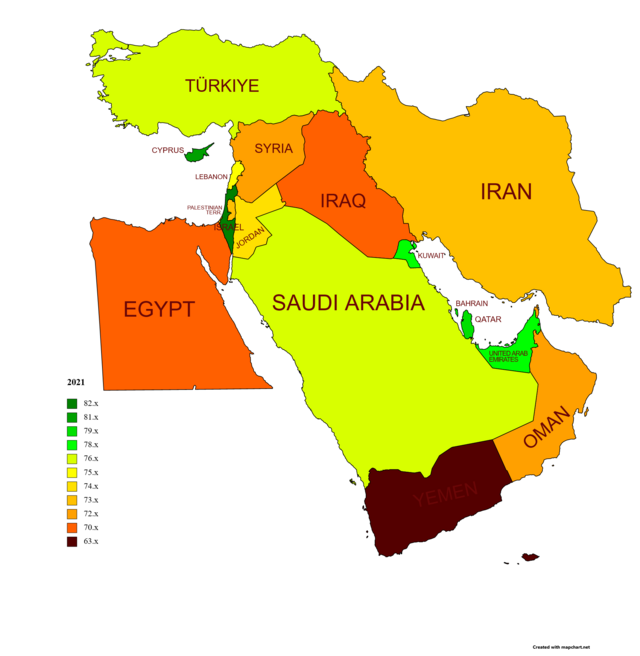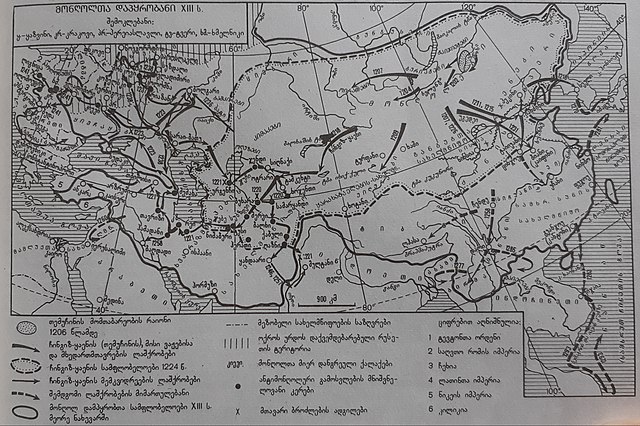The Mongol Empire was the largest contiguous land empire in history, spanning over 24 million square kilometers at its peak under the rule of emperors like Genghis Khan in the 13th century CE. This empire connected and encompassed large areas of Eurasia, extending from Eastern Europe to the Sea of Japan. Read on for a comprehensive overview of the locations that constituted this vast domain.
Origins on the Mongolian Steppe
The Mongol Empire originated in the early 13th century CE among nomadic tribes on the cold and arid steppes of what is today Mongolia. Located in North/Central Asia, Mongolia is a landlocked country bordered by Russia to the north and China to the south.
The indigenous inhabitants of these remote grasslands were pastoral nomads who moved from place to place with their herds of horses, sheep, goats, and cattle. Living in portable tents called yurts, they subsisted primarily on meat and dairy products from their livestock. Harsh conditions on the windswept steppes bred hardy warriors who excelled at horsemanship and archery.
It was here that a warrior and political genius named Temüjin rose to power and united the nomadic tribes under his rule from 1206-1227 CE. He took on the title “Genghis Khan,” meaning “universal ruler,” and established the Mongol nation (also called the Mongol ulus or patrimony). This was the precursor to the enormous Eurasian empire that the Mongols would come to rule under his descendants.

The Mongol Heartland and Occupation of Northern China
Genghis Khan first set his sights on conquering the neighboring, agrarian societies to support the traditional pastoral-nomadic lifestyle of the steppe tribesmen. He campaigned against the Western Xia dynasty, which ruled northwestern China (in what is today Gansu and Ningxia provinces as well as Inner Mongolia). The Mongols seized the Western Xia by 1209 CE.
Genghis Khan also invaded the wealthy and urban Jin dynasty of northern China, gaining control over Beijing by 1215 CE. Mongol cavalry forces ransacked cities, plundering their manufactures and wealth. The Mongols also enslaved many artisans to bring their technical skills back to Mongolia. By 1234 CE under Genghis’s successor Ögedei Khan, the Mongols completely overran the Jin state, incorporating all of northern China into their empire.
Back in the Mongolian steppe heartland, the capital city Karakorum was established near the Orkhon River valley. Conquered peoples from China were brought to build up this nomadic camp into a thriving trade entrepôt and administrative center to govern the expanding empire. Karakorum became cosmopolitan, filled with merchants, envoys, and artisans of many languages and creeds from a diverse Eurasian network. But Mongol customs and language still dominated daily life and imperial rule.

Westward Expansion Into Central Asia, Iran, and Kievan Rus'
Not content to remain in East Asia, Genghis Khan also sent his armies on daring campaigns westward to subdue the rest of the continent. He invaded the kingdom of Khwarazm (composed of Persia/Iran and Turkestan) from 1219-1221 CE. This added modern-day Iran, Afghanistan, Tajikistan, Uzbekistan, and parts of Pakistan like Punjab and Sindh to the Mongol Empire. The renowned Persian city of Samarkand (in present-day Uzbekistan) was captured and plundered.
The sudden death of Genghis Khan in 1227 CE while preparing an invasion into India halted Mongol expansion for about ten years. Then under the Khans Ögedei, Guyuk, and Möngke, offensives resumed westward. The Mongols stormed across the Caucasus mountains into Kievan Rus’ territory (the medieval predecessor state of Belarus, Russia, and Ukraine) from 1237-1240 CE. This incursion smashed major settlements like Kiev, Vladimir, Ryazan, and Moscow. Russia came under the control of the Khanate of the Golden Horde, one of four regional Mongol khanates.
Southward Conquest into the Middle East, Including Baghdad
While one Mongol army struck Russia, another proceeded south into the Middle East, conquering greater Iran on the way to Baghdad. Elite horseback archers swiftly outmaneuvered lumbering Persian and Turkish armies. From 1219-1258 CE under several Khans, the Mongols seized control over the territories constituting present-day Azerbaijan, Armenia, Georgia, Turkey, Syria, and Iraq.
In 1258 CE, Mongol forces captured Baghdad and executed the last Abbasid Caliph, destroying this capital of the Islamic Golden Age and dealing a crushing blow to the Sunni Muslim world. This firmly consolidated Mongol authority over the Middle East. The center of the growing empire shifted toward West Asia as contact with Europe increased via trade, diplomacy, and conflict.

Nightmare Invasion Into Medieval Hungary and Poland
Intending to continue the offensive deeper into Europe and Christendom, Mongol armies also invaded central Europe in a series of devastating raids from 1241-1242 CE. A vast force led by Batu Khan, grandson of Genghis Khan, rampaged westward as far as Hungary, Yugoslavia, Poland, and Austria. The Mongols crushed German and Polish armies at Leignitz as well as Hungarian forces at Mohi and other areas.
Eastern and Central European territories like Moravia, Croatia, Transylvania, and Wallachia endured the brunt of the carnage. Tens of thousands were massacred and major population centers like Kraków, Warsaw, Buda, and Pest were reduced to rubble. However, wariness of overextending supply lines and military fatigue forced the Mongols to suddenly withdraw back to Russia just as Western Europe seemed ripe for the taking. Still, the memory of the devastating surprise invasions lingered for centuries in the European psyche.
Eastward Conquest Into Song Dynasty China and Korea
While some Mongol forces were fighting in Western Asia, the Khans also continued aggressive eastern campaigns. From 1231-1259 CE, the Mongols battled the Southern Song dynasty ruling southern/central China. Using gunpowder explosives and siege tactics learned from Song engineers and deserters, the Mongols gradually conquered this wealthy realm city by city despite stiff resistance. By 1279 CE during Kublai Khan’s reign, he completed the conquest, unifying all of China under Yuan dynasty Mongol rule for about a century until 1368 CE.
From 1231-1258 CE, the Goryeo Dynasty kingdom on the Korean peninsula also endured numerous devastating slave raids and full-scale invasions from Mongol generals hoping to use Korea as a base to assault the Song Chinese. Though never directly incorporated, Korea was essentially a vassal state under the Mongol Empire’s sphere of control.
Mongol Invasions of Southeast Asia, Including Vietnam, Java, and Japan
In addition to China and Korea, the expansionist Mongol Khans ordered repeated invasions further south into Southeast Asia from the 1250s-1290s CE, though they found less success subduing the tropics. Mongol forces captured the Dali Kingdom of Yunnan, China bringing parts of Myanmar/Burma under their domain. Generals like Kublai Khan sent armadas and armies across the seas, unsuccessfully attacking Java, Borneo, Sumatra, and Vietnam many times only to be defeated by tropical disease, climate, and fierce resistance.
The most disastrous defeat came in 1274 CE and again in 1281 CE when formidable Mongol-Korean fleets with over 20,000 sailors and marine troops tried capturing the Japanese isles. They intended to incorporate Japan into their empire as a vassal state. However, massive typhoons known as the “kamikaze” or “divine wind” wrecked both invasion flotillas, saving Japan from occupation and earning mythological status. This ended major Mongol expansion attempts, as rulers focused more inward to governing their current lands.

Inherited by Turco-Mongol Successors Like the Timurids and Mughals After Decline
By the 14th century CE, the unified Mongol Empire had fractured into four Khanates jostling for power – the Golden Horde of Eastern Europe, the Chagatai Khanate of Central and South Asia, the Ilkhanate of the Middle East, and Yuan China. Eventually, Mongol Khans partially assimilated into local cultures like Islam and Buddhism, adopting their languages and customs. Mongol nobles increasingly relied on settled peoples’ infantry and bureaucracy over traditional cavalry/nomadic tribesmen to rule lands often not strategically essential or loyal.
Over several decades, the Mongol Khanates declined due to factional civil wars and uprisings by conquered vassals like the Han Chinese and Egyptian Mamluks. By 1368 CE in China and by 1502 CE in Central Asia, the Khanates had by-and-large lost their territories or morphed. However, Turkic/Mongol Muslim successor dynasties with Mongol political
Conclusion
In summary, the Mongol Empire encompassed the largest contiguous land empire ever seen, spanning 24 million square kilometers at its 13th century CE peak. Originating from the pastoral nomadic tribes of the cold Mongolian steppes, the Mongols rapidly expanded outwards under the leadership of conquerors like Genghis Khan and his descendants. Mongol horseback armies campaigned successfully across most of Eurasia – occupying China, Korea, Russia, the Middle East, Iran, Caucasus, parts of Europe, Central Asia, and Southeast Asia. Chronicles describe the amount of plunder and destruction immense.
Eventually Mongol rulers partially assimilated and relied more on settled civilizations’ infantry and governing methods over traditional nomadism. By the 1400s CE, nearly all of the unified empire had dissolved or fragmented into regional Turco-Mongol khanates adapting local languages and faiths. But the political and economic integration of the Silk Road zone initiated by the Pax Mongolica continued for centuries, facilitating trade and transmission of ideas from East Asia far into Europe.

Frequently Asked Questions
What modern-day countries were part of the Mongol Empire?
At its height from 1206-1368 CE, the Mongol Empire conquered and ruled over the territories now comprising or partially including several modern-day countries:
- Mongolia
- China
- Korea
- Russia
- Ukraine
- Belarus
- Caucasus nations (Armenia, Georgia, Azerbaijan)
- Kazakhstan
- Kyrgyzstan
- Tajikistan
- Uzbekistan
- Turkmenistan
- Afghanistan
- Pakistan
- India
- Iran
- Iraq
- Syria
- Turkey
- Hungary
- Poland
- Moldova
How long did the Mongol Empire last?
The unified Mongol Empire at its largest extent lasted for about 160 years from 1206-1368 CE. It began under Genghis Khan through attacks on northern China and central Asia, reaching its peak under Kublai Khan with the conquest of all China by 1279 CE. By the mid-1300s, it had fragmented into four khanates that gradually declined or assimilated until the last remnant dynasty in China ended in 1368 CE with the Ming overthrow of the Yuan Dynasty. Descendant Mongol regimes and aristocracies persisted for longer in areas like Russia and India.
What led to the decline of the Mongol Empire?
There were several factors that contributed to the dissolution of the unified Mongol Empire by the late 14th century CE:
-
Lack of clear succession plans and bloody power conflicts between heirs of khans – the descendants of Genghis Khan battled each other for supremacy, dividing territory in civil wars.
-
Overexpansion and logistical/administrative difficulties governing distant conquered lands with fundamentally alien cultures. Mongolian customs did not always mesh with Confucian or Islamic or Russian societies.
-
Mongols increasingly relied on and assimilated with local majorities like Han Chinese, Turks, Persians, and Eastern Europeans. Many Mongol rulers adopted Buddhism, Islam, or Eastern Orthodox Christianity and stopped emphasizing their steppe nomadic warrior lifestyle origin.
-
The Black Death pandemic spread via trade networks to Mongol lands as early as the 1330s, hitting major cities and posing further economic and social disruption.
Sources
Bergreen, Laurence. “Over the Edge of the World.” Harper Perennial, 2004.
“The Mongol Empire.” World History Encyclopedia, 2022. https://www.worldhistory.org/Mongol_Empire/
Weatherford, Jack. “Genghis Khan and the Making of the Modern World.” Three Rivers Press, 2005.
Man, John. “Genghis Khan: Life, Death, and Resurrection.” St Martin’s Publishing Group, 2004.
Stewart, Angus D. “The Armenian Kingdom and the Mamluks: War and Diplomacy during the Reigns of Het’um II (1289–1307).” Brill, 2001.